
US Army 24-Pounder, Pattern 1845, in Vicksburg
A US Army 24-Pounder, Pattern 1845, is displayed on “Cannon Row” at Vicksburg National Military Park. This 24-Pounder was cast in 1853 at West Point Foundry. As manufactured it weighed 5,736 pounds. Like the earlier 24-Pounder, Pattern 1819, this type could be found in use both as a siege gun but also as a garrison gun and seacoast gun.
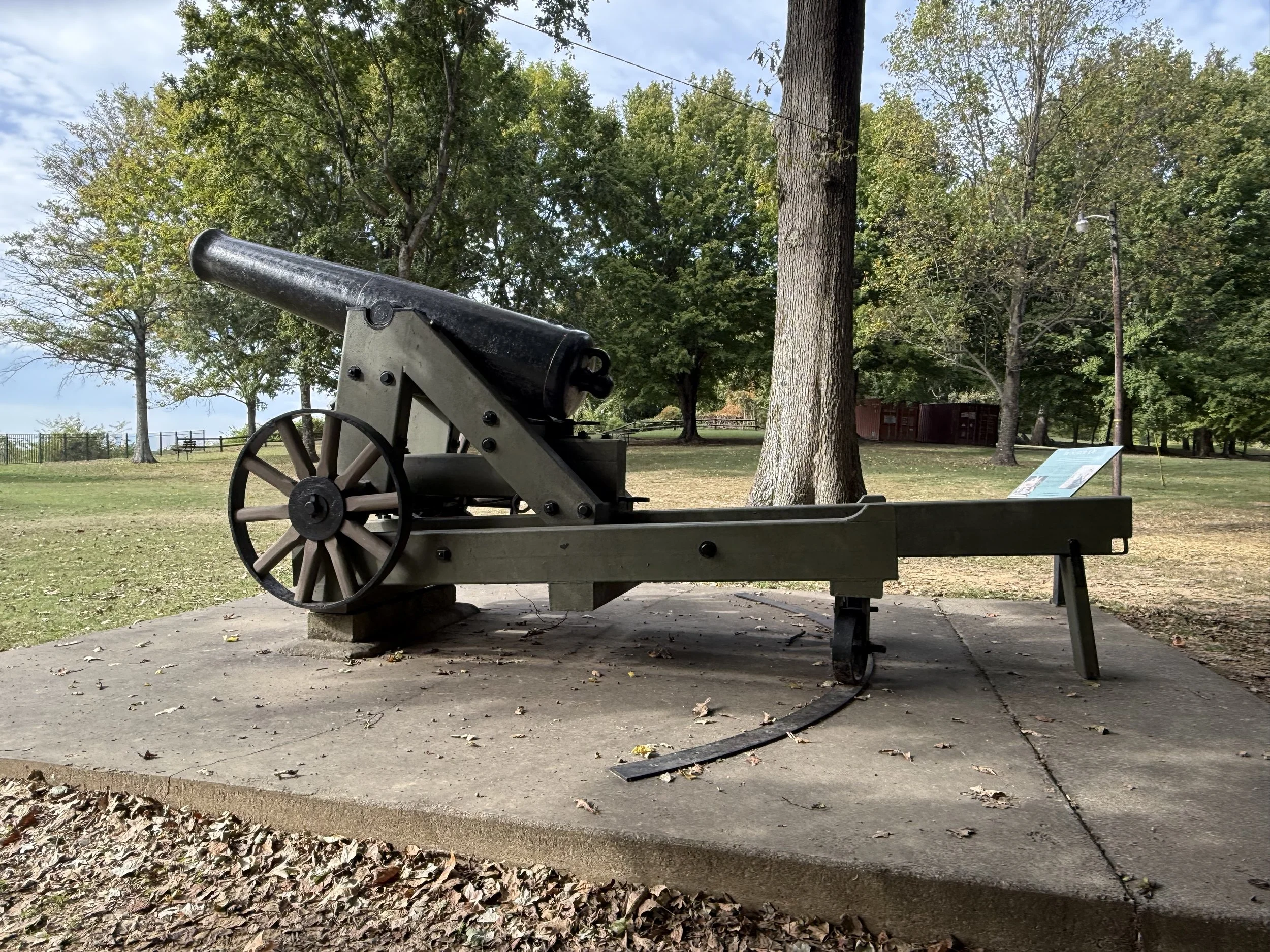
US Army 32-Pounder, Pattern 1829, at Columbus-Belmont State Park
US Army 32-Pounder, Pattern 1829, Number 209 cast by Fort Pitt Foundry in 1839 is displayed at Columbus-Belmont State Park in Columbus, Kentucky. As manufactured it weighed 7,545 pounds. The State Park is the site of the Confederate Fort De Russey which was commanded by General Leonidas Polk who called the works the “Gibraltar of the West.”
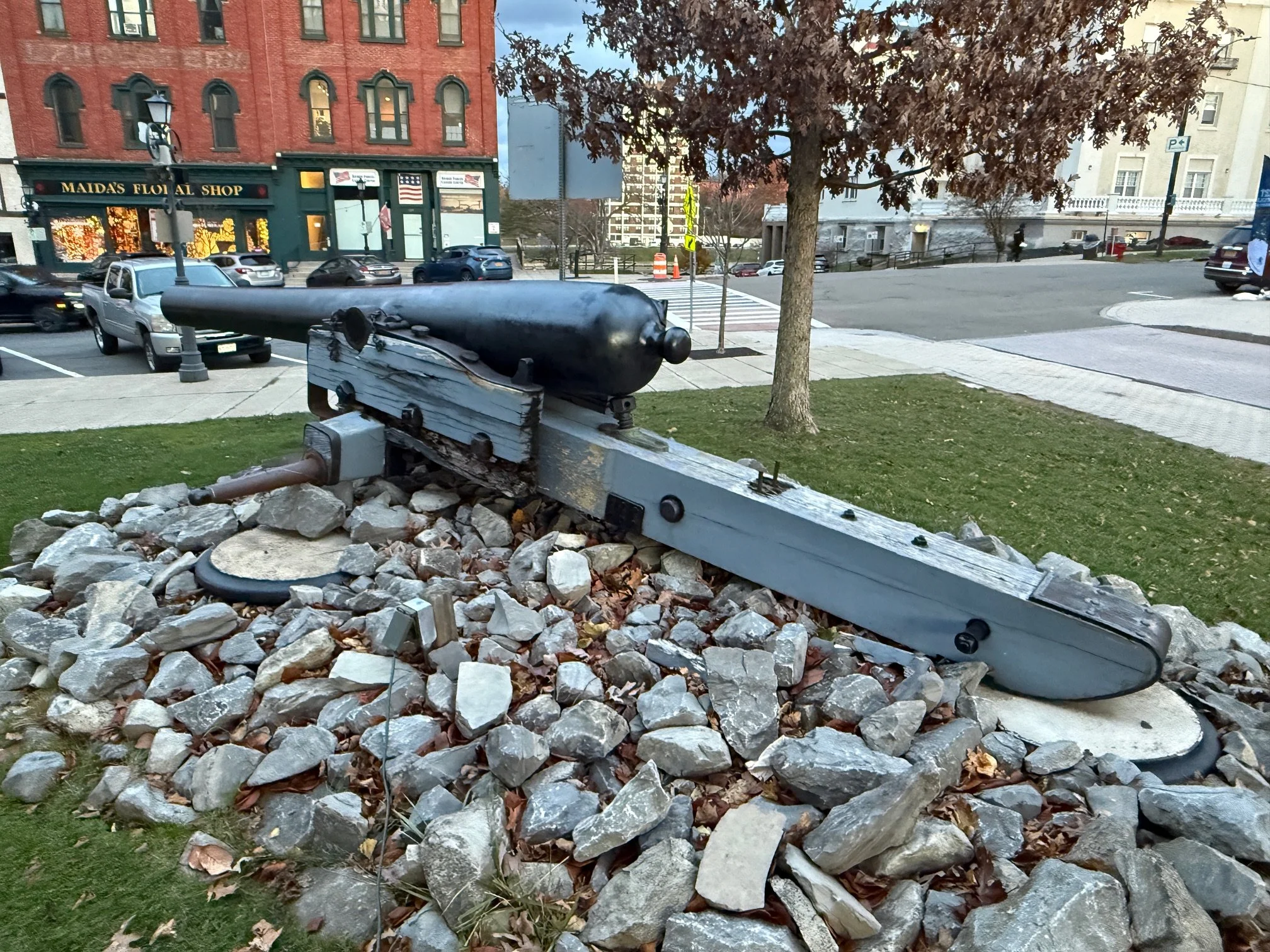
US Army 4.5-Inch Siege Rifle in Oswego, New York
A US Army 4.5-Inch Siege Rifle, Pattern 1861, is displayed in Oswego, New York. It was cast at Fort Pitt Foundry in 1861 and is registry number 10. As manufactured, it weighs 3,561 pounds. It is displayed upon the remnants of its carriage.

US Army 8-Inch Rodman in Rochelle, Illinois
A US Army 8-Inch Rodman Gun, Pattern 1861, is displayed outside the old city hall and current Flagg Township Museum in Rochelle, Illinois. It was cast at Fort Pitt Foundry in 1863 and is registry number 25. As manufactured it weighed 8,445 pounds.

US Army 24-Pounder Siege Guns at Shiloh
Two US Army 24-Pounders, Pattern 1819, are among the many artillery pieces which may be seen at Shiloh National Military Park.
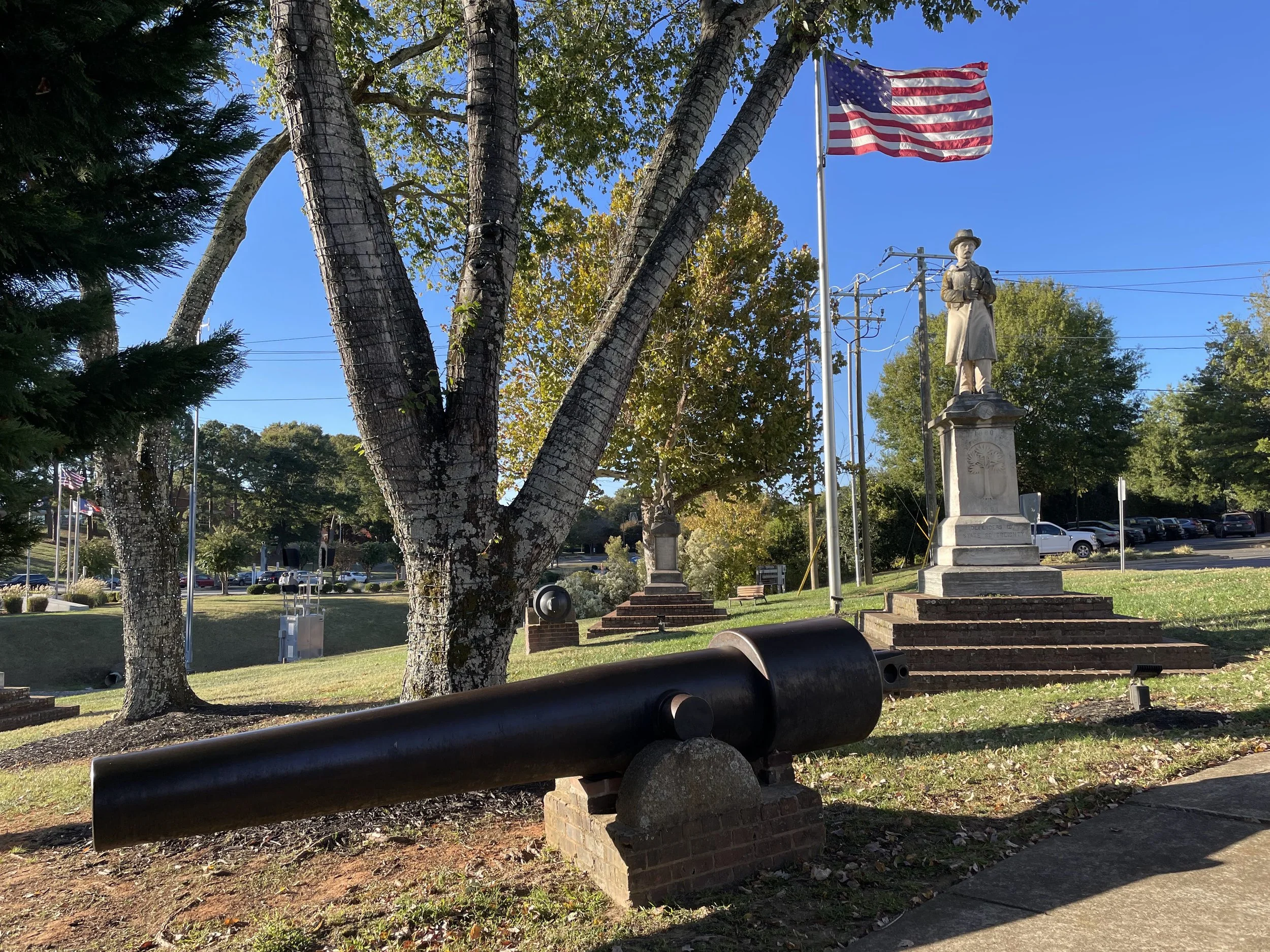
The 100-Pounder Parrott Rifles of Fort Mill, South Carolina
Two US Army 100-Pounder (or 6.4-Inch) Parrott Rifles are displayed in Fort Mill, South Carolina. The two Parrotts were brought to the town around 1901. Since 1973 they have been fired every year as part of the Fourth of July celebrations.
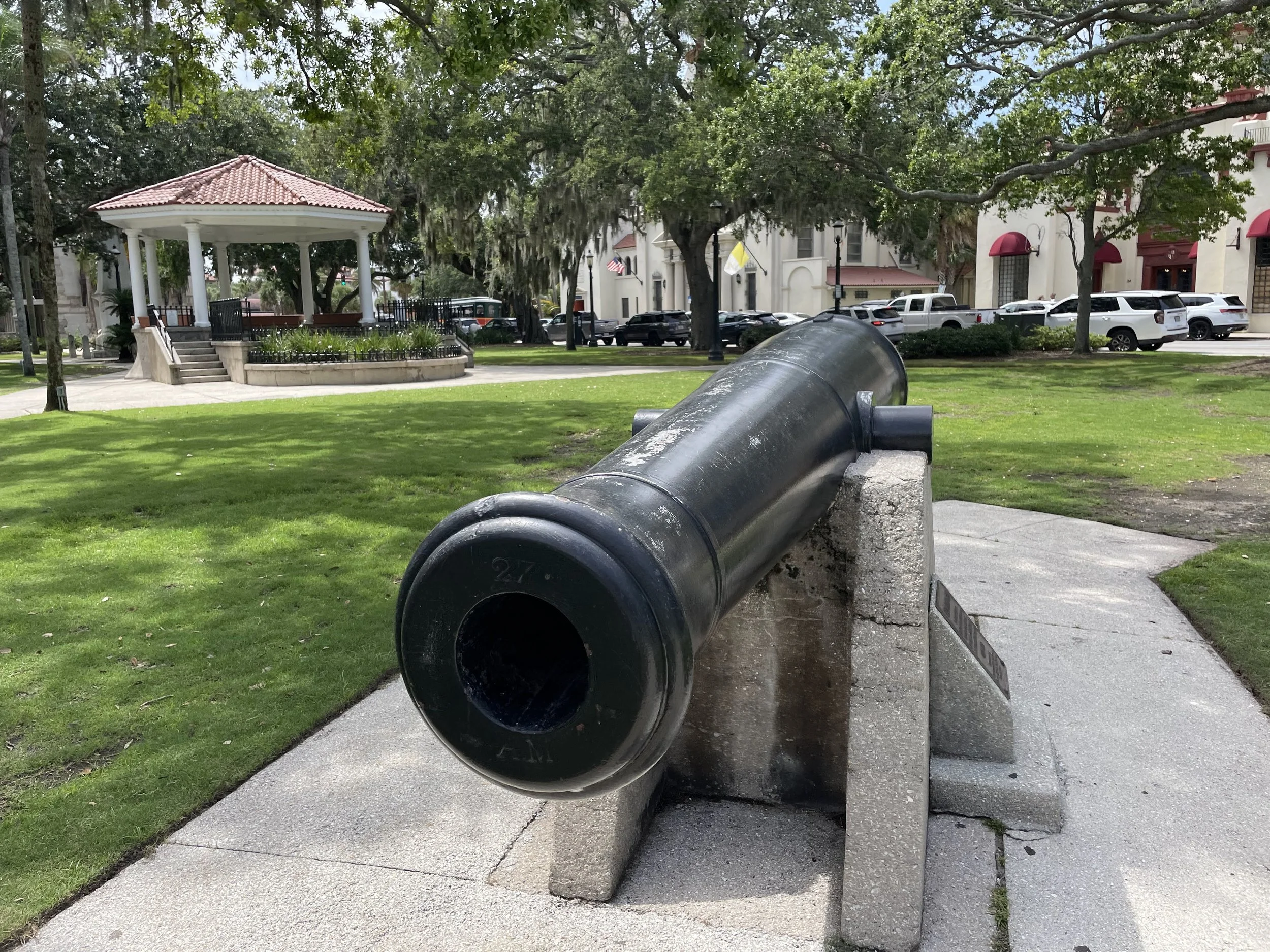
US Army 32-Pounder Seacoast Guns, Pattern 1845, in St. Augustine
Two US Army 32-Pounder Seacoast Guns, Pattern 1845, are displayed in Plaza de la Constitución in Saint Augustine, Florida. These cannon was cast at Tredegar in Richmond in 1846. They are registry numbers Number 5 on and 27 on their muzzles. Both of these cannons have been rifled. As manufactured they weighed 7, 215 pounds and 7,256 pounds.
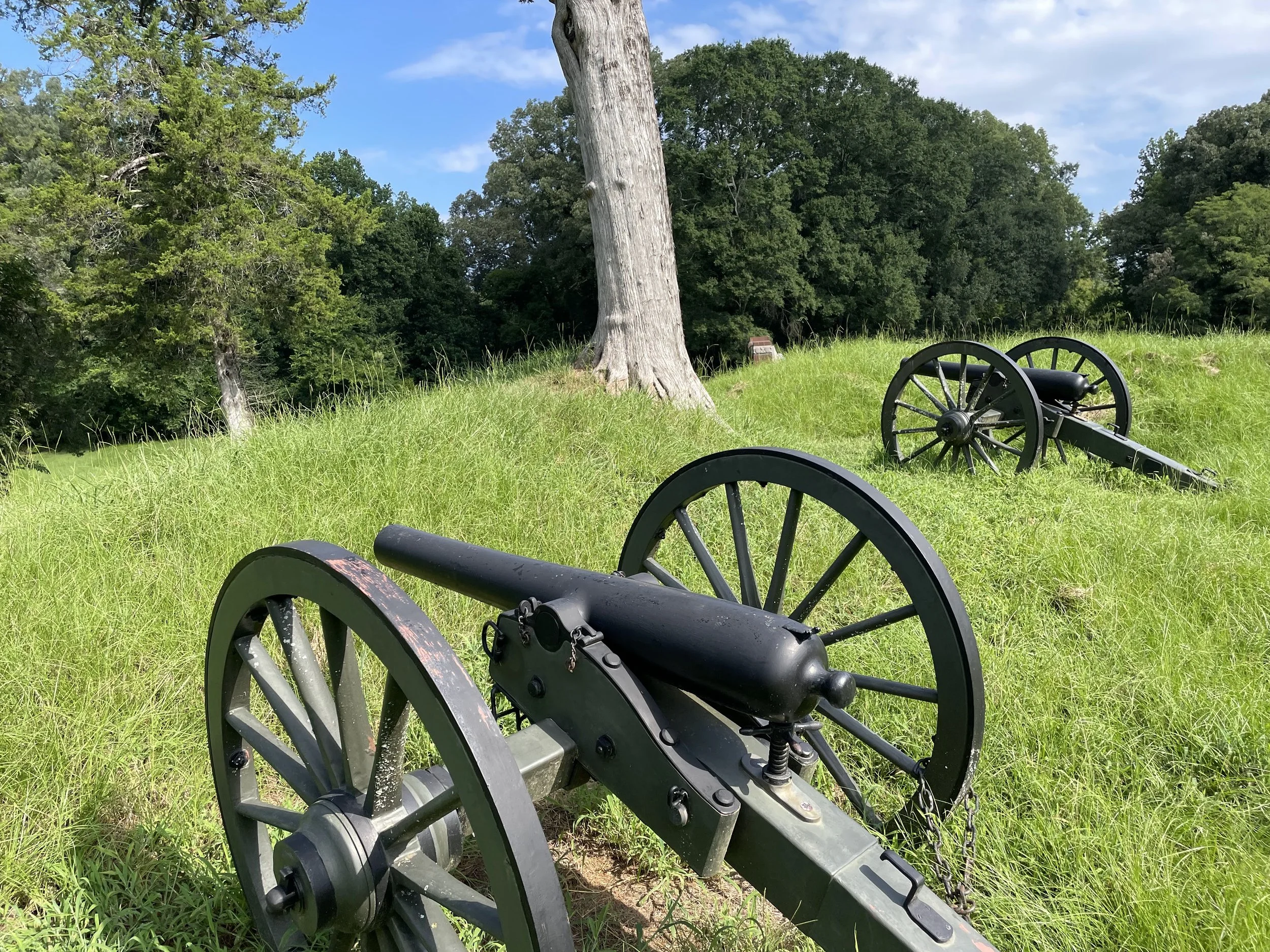
US Army 3-Inch Ordnance Rifles 415 and 416 at Vicksburg
Two US Army 3-Inch Ordnance Rifles flank a plaque noting the service of the 12th Battery Wisconsin Light Artillery. I believe these to be registry numbers 415 and 416, though none of the photos I took of the muzzles are great. Both rifles were manufactured in 1862 and both are marked as weighing 816 pounds as manufactured.
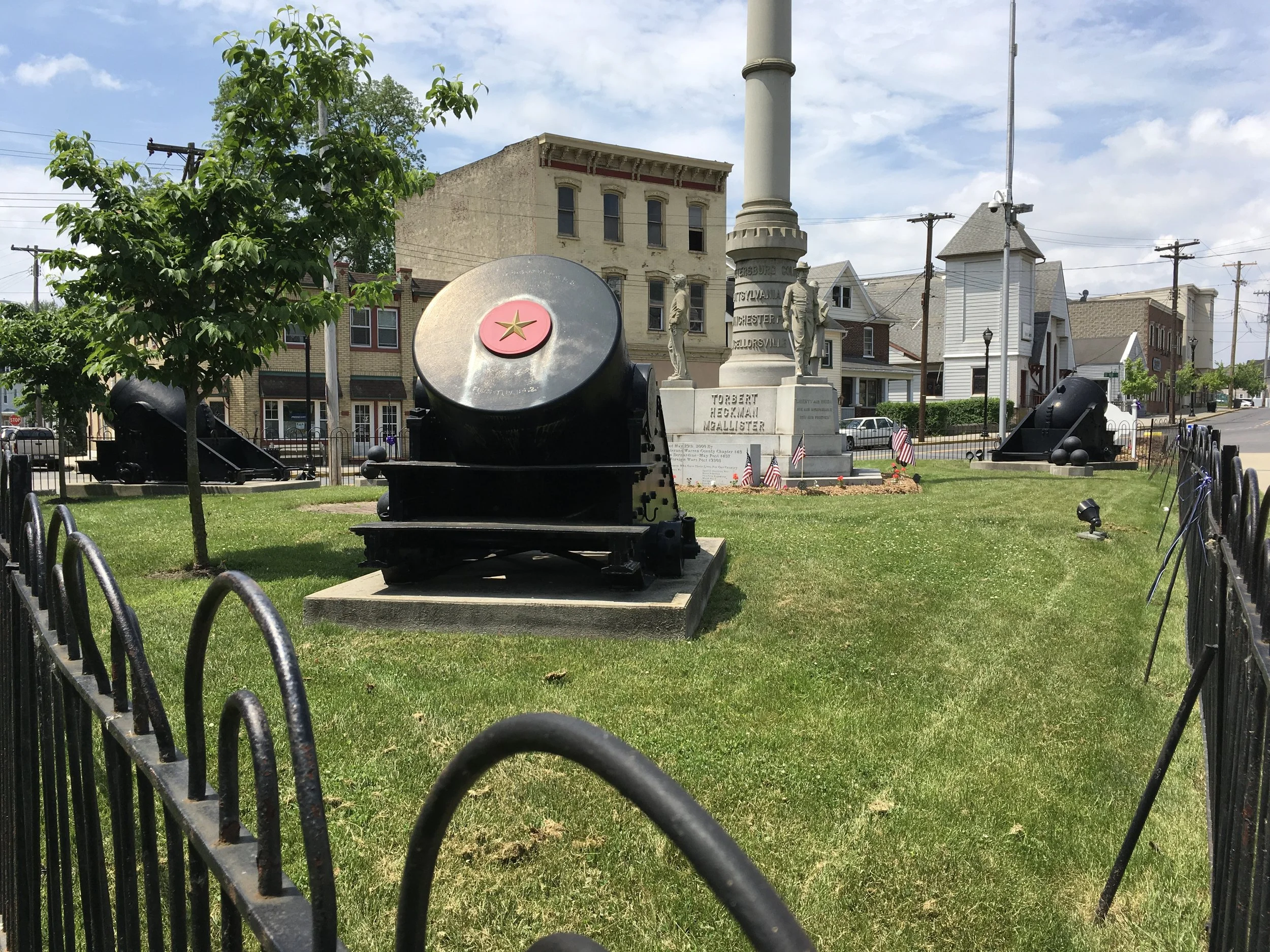
13-Inch Mortars in Phillipsburg, New Jersey
Four US 13-Inch Mortars, Pattern 1861, are displayed in Phillipsburg, New Jersey. Three may be found around a monument in the town square. Another is found in the nearby St. Phillip and St. James Cemetery on Fillmore Street. All four are mounted on original iron carriages.
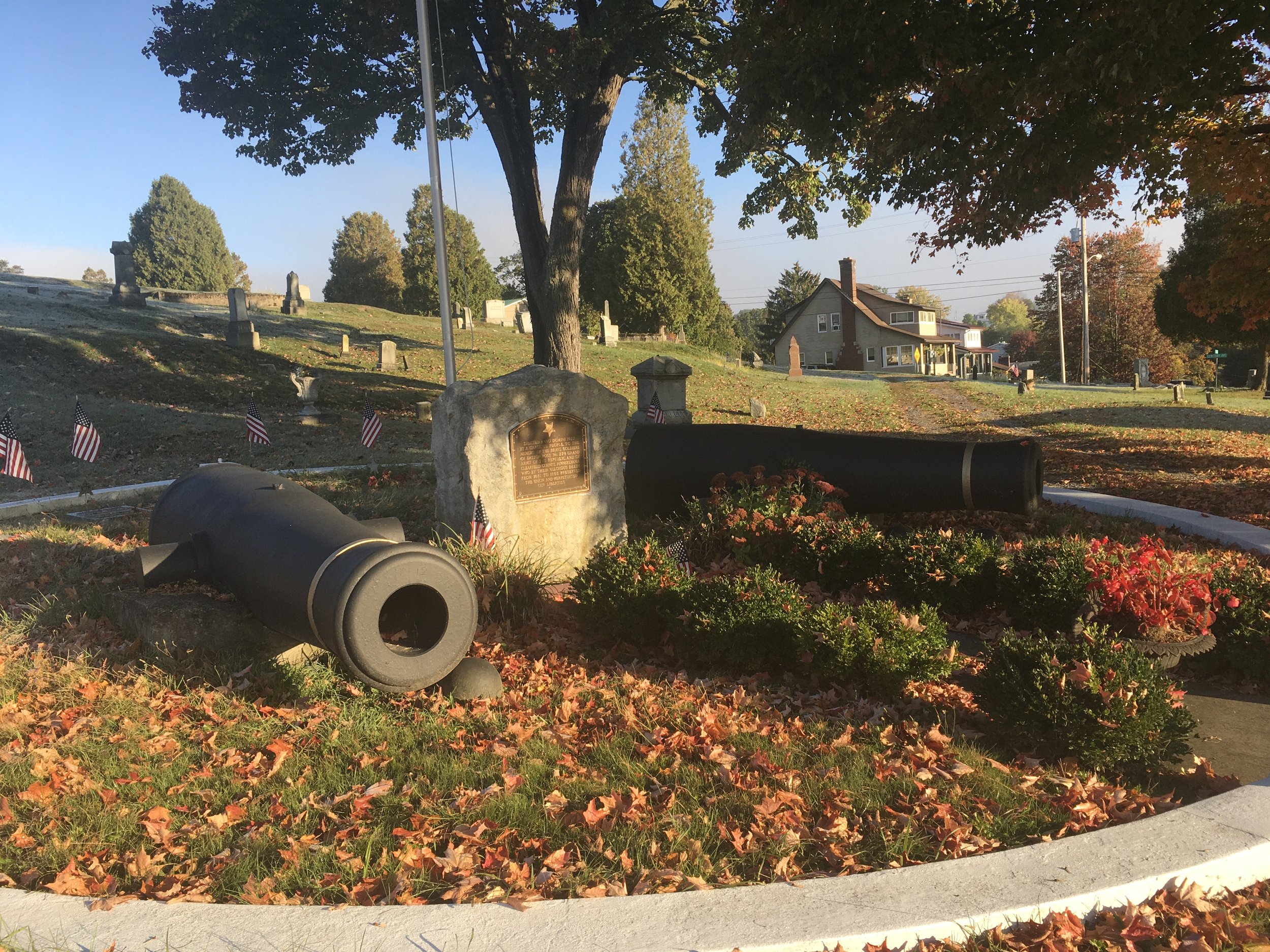
10-Inch Columbiads, Pattern 1844, in DuBois, Pennsylvania
Two US Army 10-Inch Columbiads, Pattern 1844, are displayed in Rumbarger Cemetery in DuBois, Pennsylvania. These two Columbiads were cast at Fort Pitt Foundry in 1854.
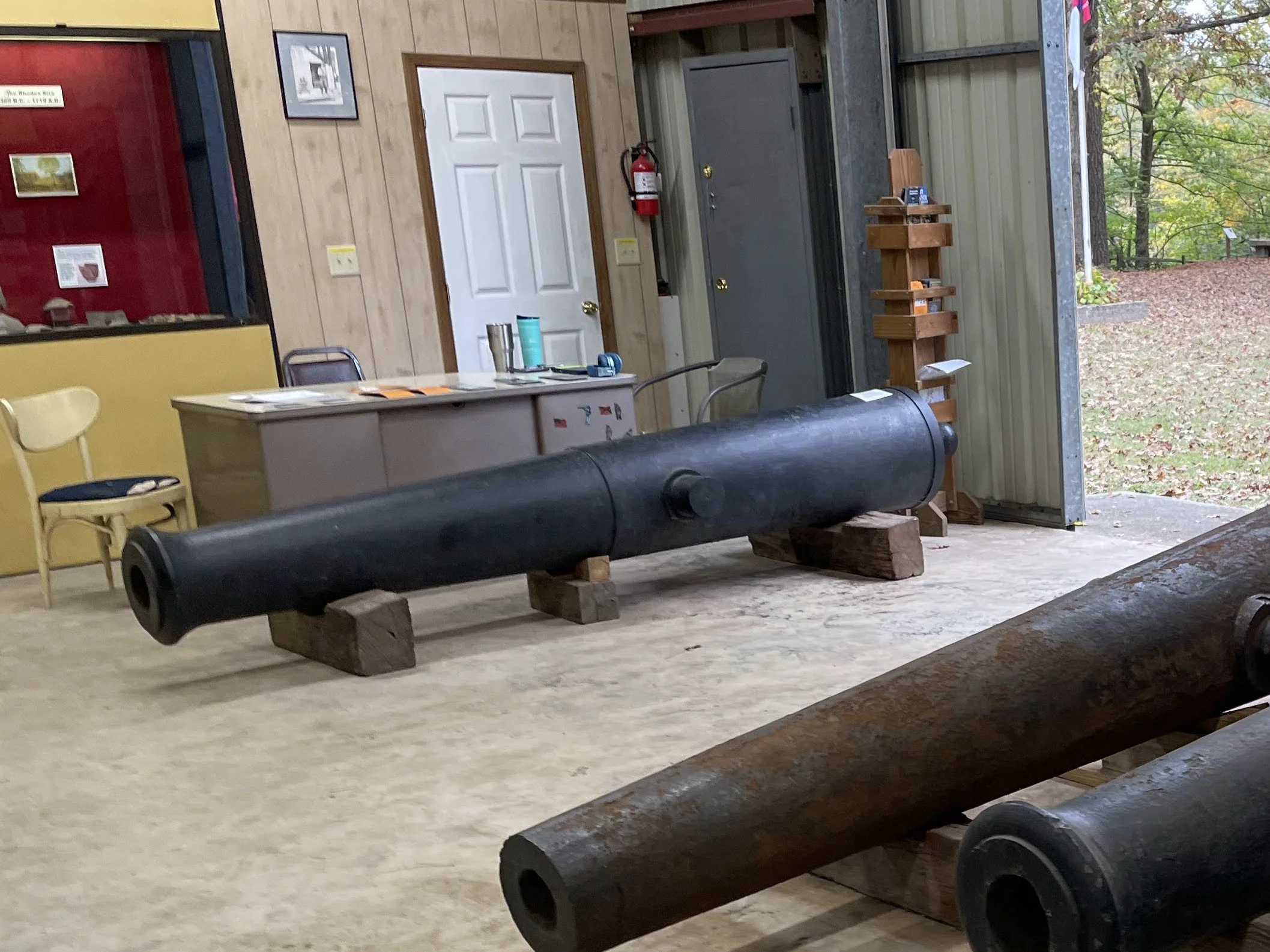
The US Army 24-Pounders, Pattern 1819, at Fort Branch
Two US Army 24-Pounders, Pattern 1819, are among the extraordinary collection of original cannons at Fort Branch near Hamilton, North Carolina. Along with the other cannons, they were thrown into the Roanoke River to prevent capture at the end of the American Civil War. All of the cannons were recovered from the Roanoke River in the 1970s.

42-Pounder, Banded and Rifled, in Lewisburg, Pennsylvania
A US Army 42-Pounder, Pattern 1845, Seacoast Gun which was banded and rifled during the American Civil War is displayed in front of the Civil War Memorial in Lewisburg, Pennsylvania. The 42-Pounder, which weighed about 8,500 pounds in its original, unbanded smoothbore state, was a popular cannon for conversion into a rifle by both North and South. As Olmstead et al. points out, of the 29 known survivors of the type, just over half have been rifled and/or banded.
This 42-Pounder was cast by West Point Foundry in 1859. It is registry number 126 (as seen on the muzzle face).
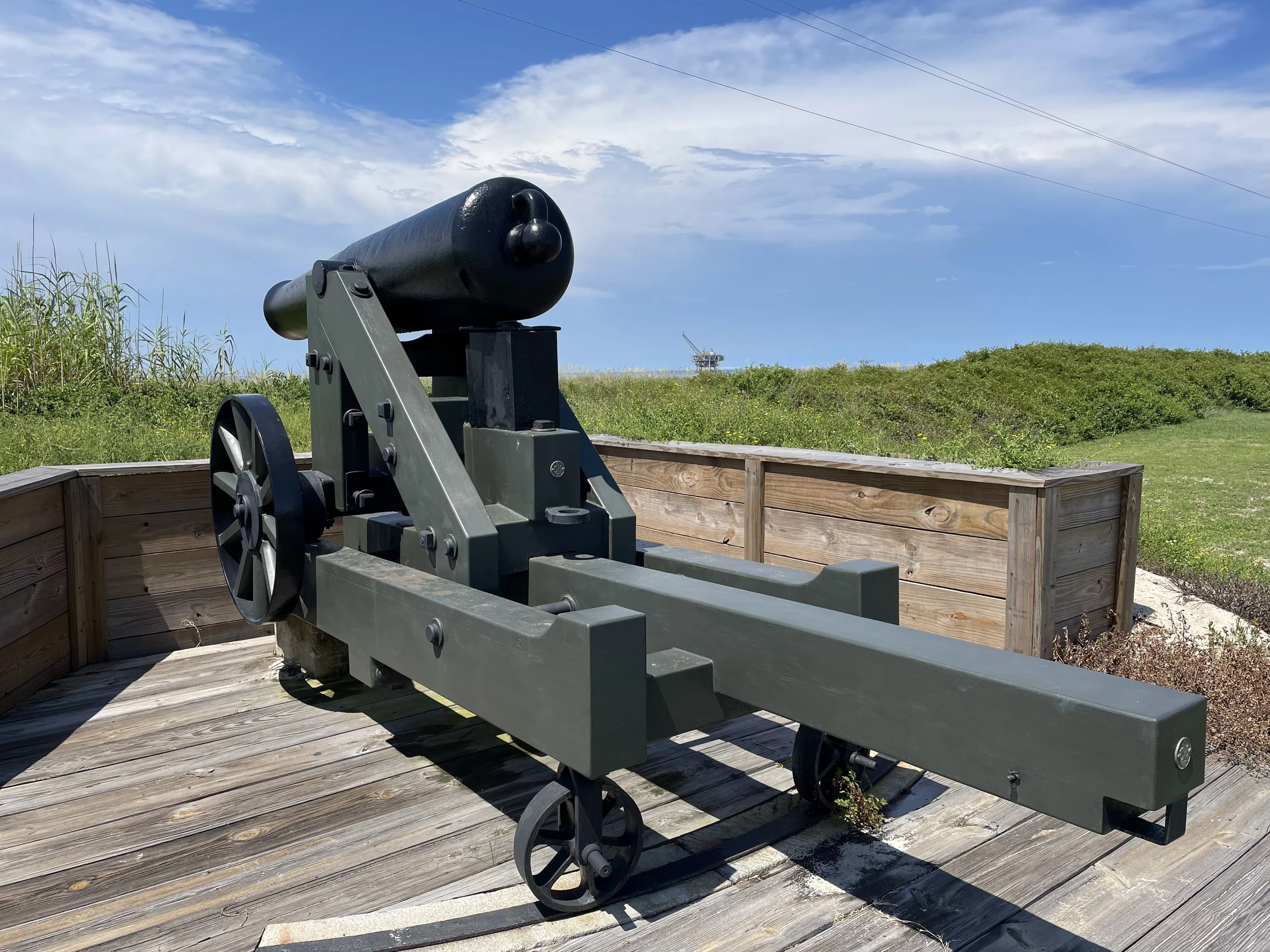
32-Pounder, Pattern 1829, at Fort Morgan
A US Army 32-Pounder, Pattern 1829, is displayed at Fort Morgan in Alabama. This cannon was cast at Fort Pitt Foundry in 1833. It is Fort Pitt registry number 116. It bears a test scar on its muzzle face. It is displayed at Fort Morgan in an emplacement overlooking Mobile Bay. It’s weight is 7,478 pounds.
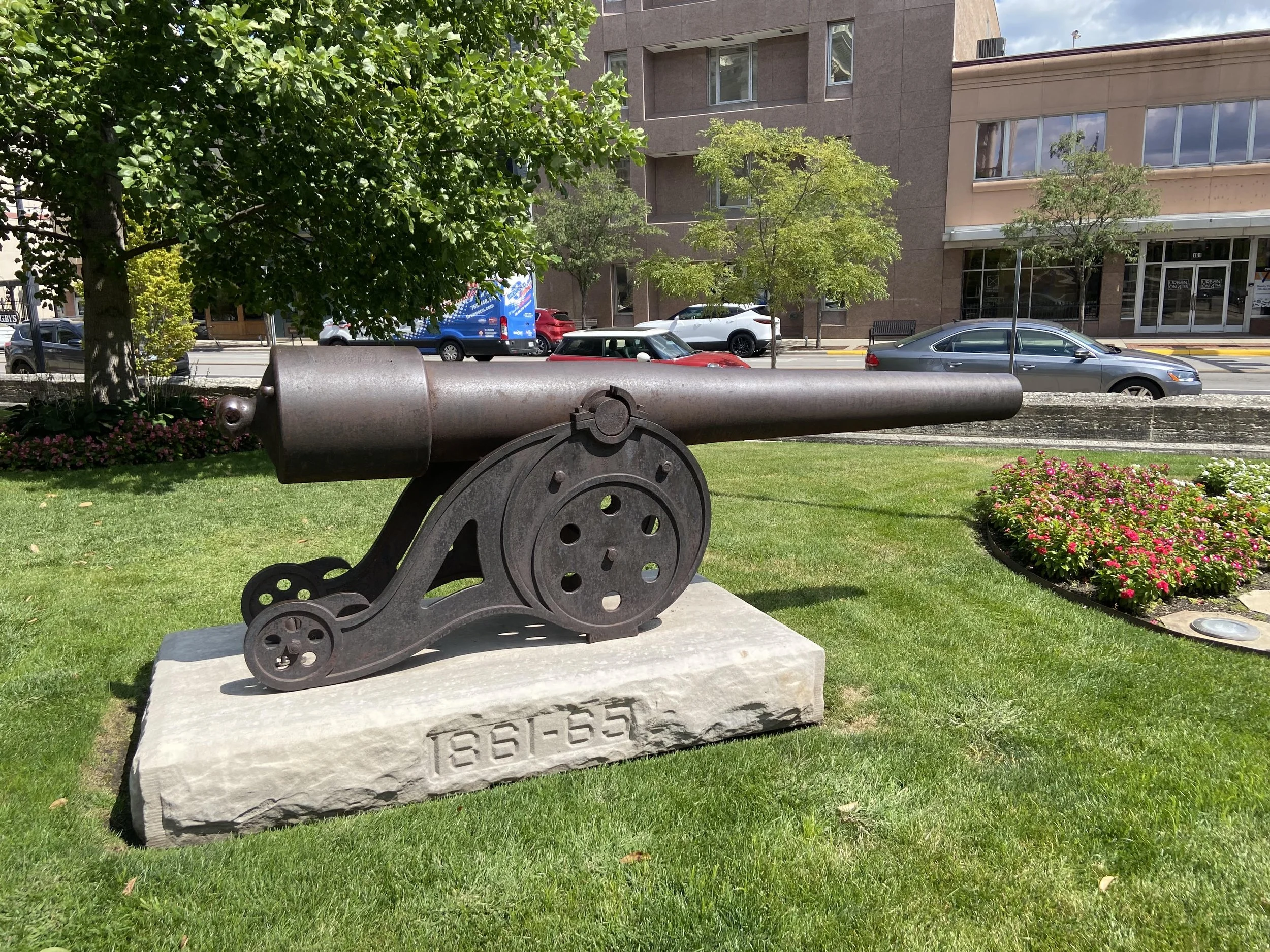
US Army 30-Pounder Parrott Rifle in Lafayette, Indiana
A US Army 30-Pounder Parrott Rifle, Number 180, is displayed in front of the Tippecanoe County Courthouse in Lafayette, Indiana. The Parrott is displayed on the southeast corner of the courthouse lawn mounted on an iron pedestal mounted on top of a stone base with the dates 1861-1865. An 8-Inch siege howitzer is displayed on the northwest corner of the courthouse. Both cannons were donated to the John A Logan, Post Number 3, of the Grand Army of the Republic on July 15th, 1897.
30-Pounder Parrott Number 180 was manufactured at the West Point Foundry in 1863. As manufactured it weighed 4,206 pounds - as seen on the muzzle.
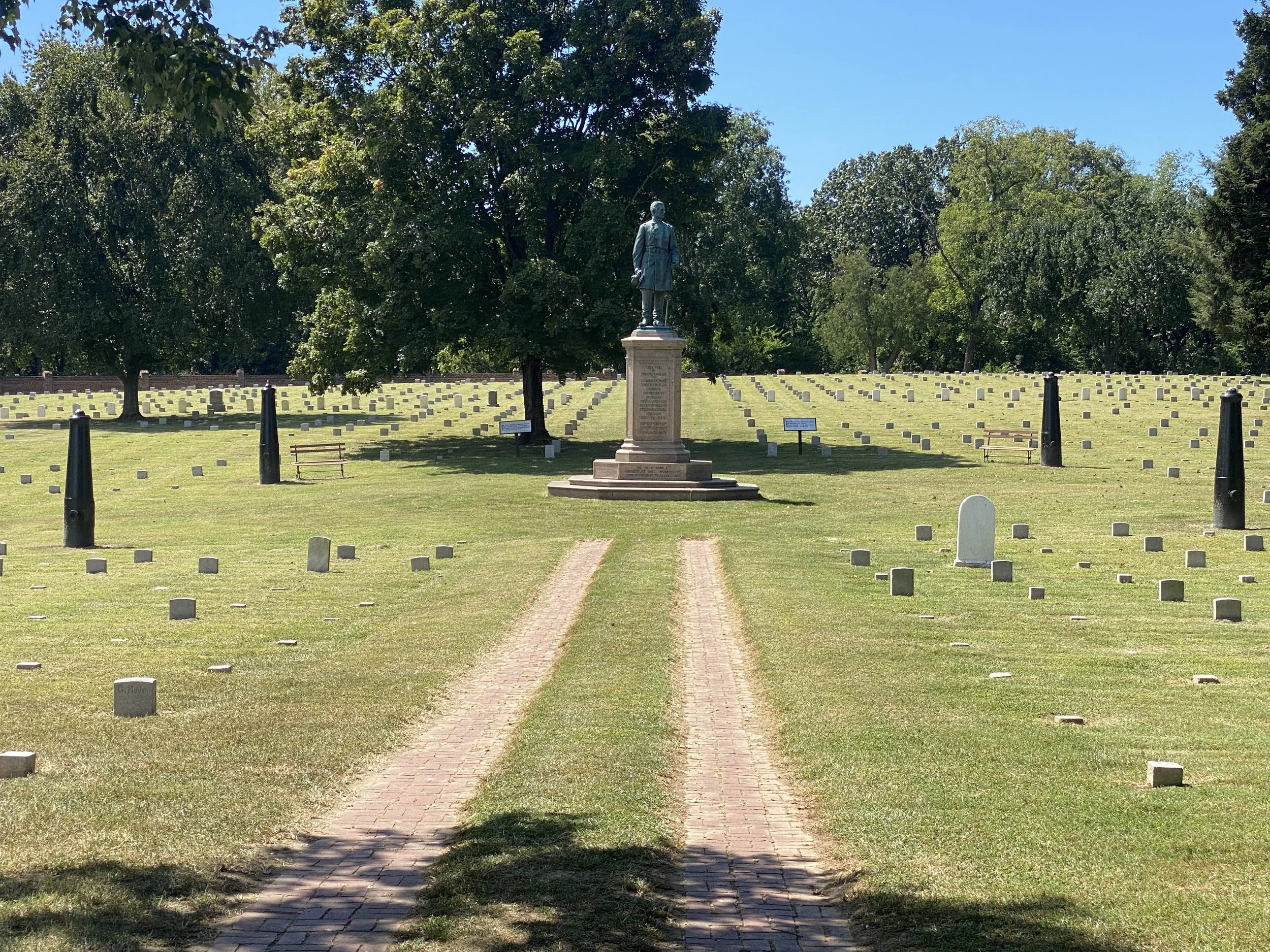
The 32-Pounders at Fredericksburg National Cemetery
Four US Army 32-Pounders, Pattern 1829, surround a monument at Fredericksburg National Cemetery to the Division of General Andrew Humphreys, V Corps, Army of the Potomac. Humphrey’s division participated in the attack on Confederate positions on Marye's Heights on December 13th, 1862, suffering heavy casualties in the engagement.
The four cannons were emplaced at the cemetery in 1868.
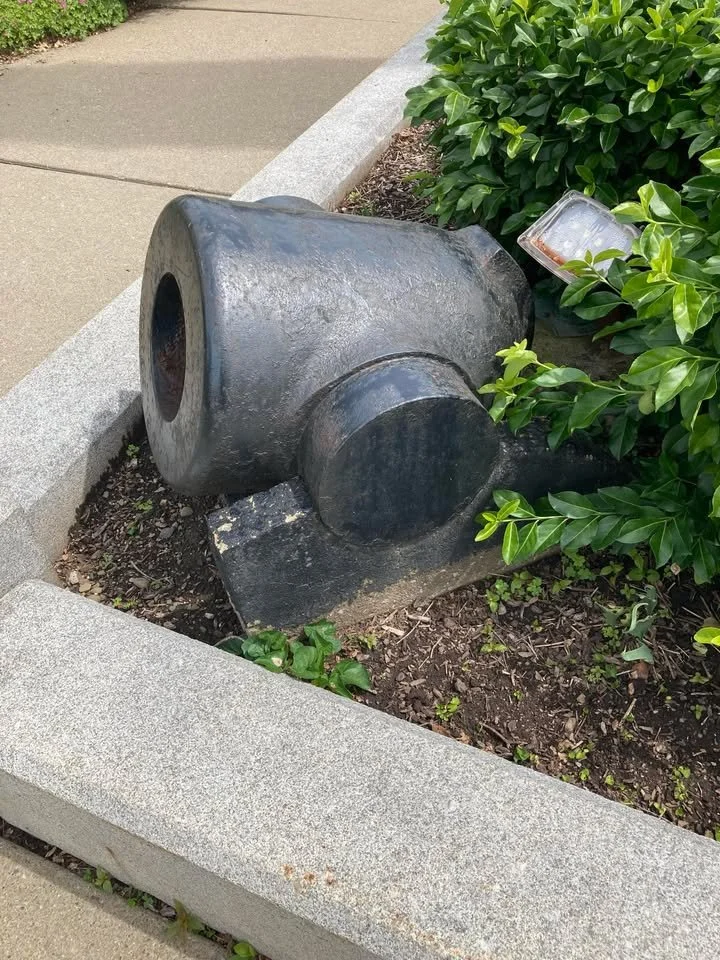
US Army 8-Inch Siege Mortars at the Tioga County Memorial
Four US Army 8-Inch Siege Mortars, Pattern 1861, are displayed surrounding the Civil War Soldiers and Sailors Memorial in Owego in Tioga County, New York. The four mortars are:
8-Inch Siege Mortar, Pattern 1861, cast by Cyrus Alger, registry Number 28, weight 1,026 pounds
8-Inch Siege Mortar, Pattern 1861, cast by Cyrus Alger, registry Number 34, weight 1,036 pounds
8-Inch Siege Mortar, Pattern 1861, cast by Cyrus Alger, registry Number 41, weight 1,033 pounds
8-Inch Siege Mortar, Pattern 1861, cast by Seyfert McManus & Co., registry number 45, weight 1,036 pounds
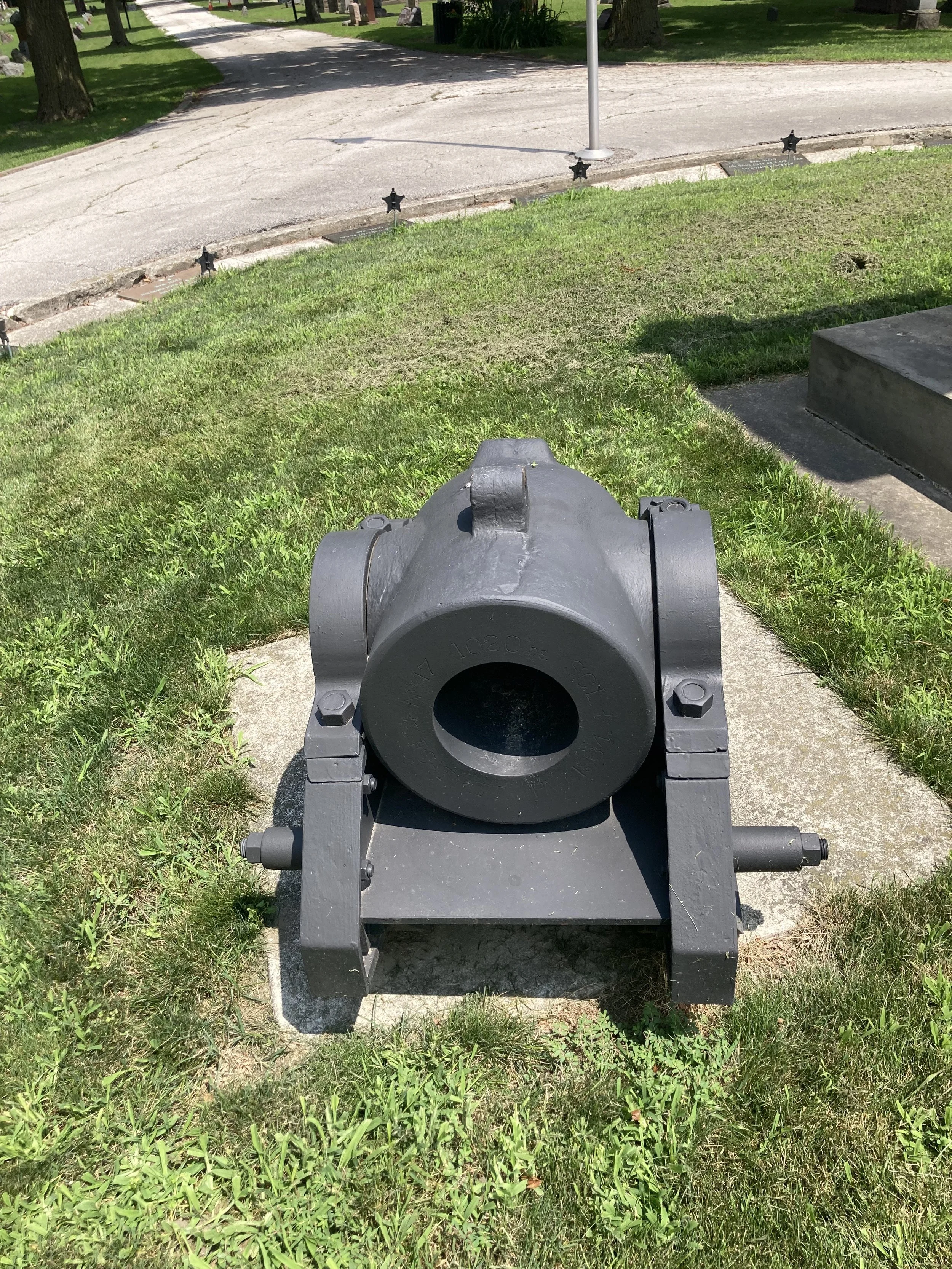
US Army 8-Inch Siege Mortars in Oregon, Ohio
Two US Army 8-Inch Siege Mortars, Pattern 1861, are displayed at Willow Cemetery in Oregon, Ohio. Many thanks to friend-of-the-page Phil Spaugy for sharing the photos!
The two mortars were both cast at Fort Pitt Foundry in 1864. They bear the consecutive registry numbers 46 and 47. They are both marked as weighing 1,020 pounds, and they also both appear to be on original carriages. They flank a monument dedicated in 1882.
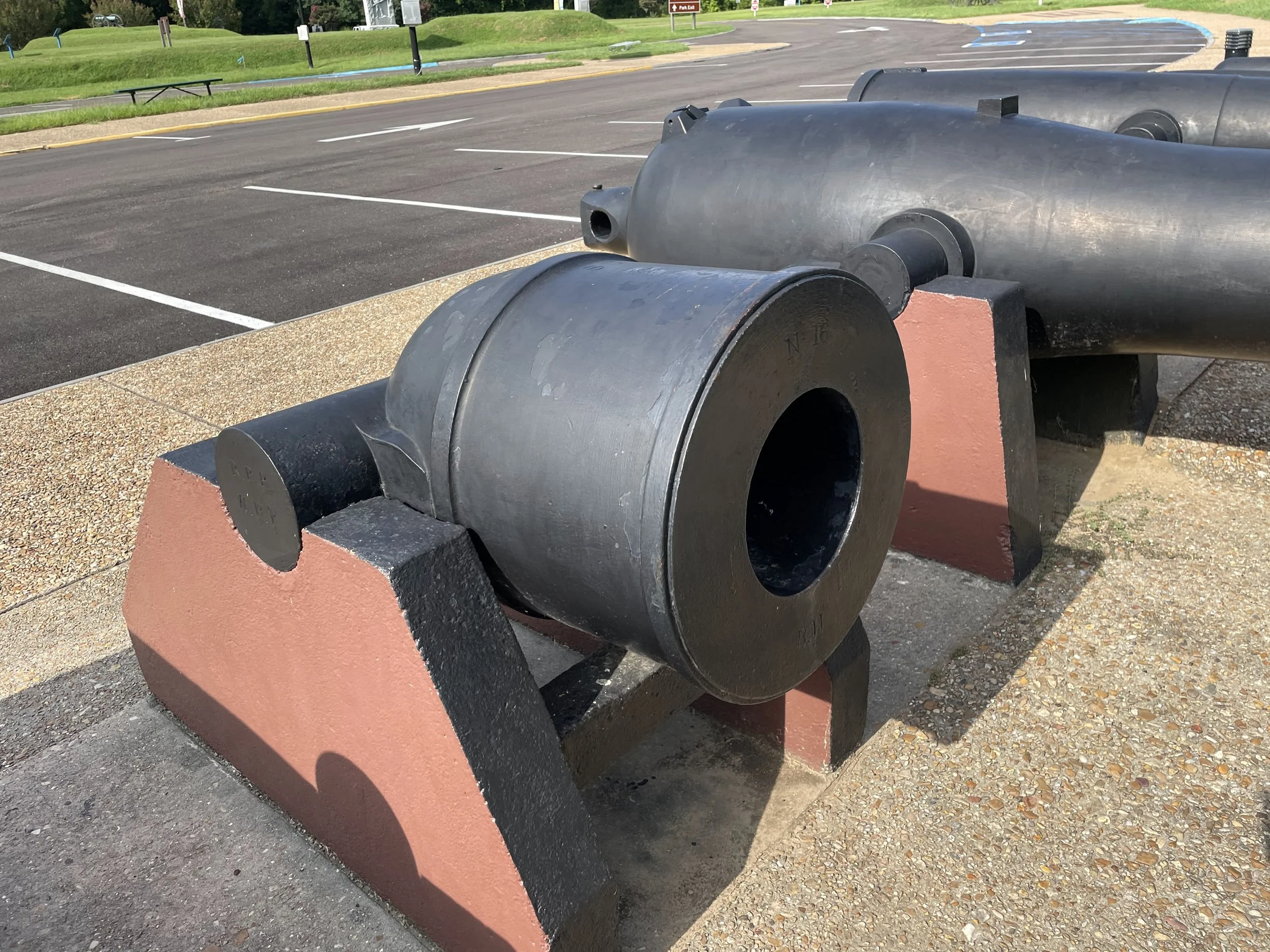
10-Inch Siege Mortar, Pattern 1840, at Vicksburg
US Army 10-Inch Siege Mortar, Pattern 1840, displayed on "Cannon Row" at Vicksburg National Military Park - this mortar was cast in 1859 at West Point Foundry. As manufactured it weighed 1,812 pounds.
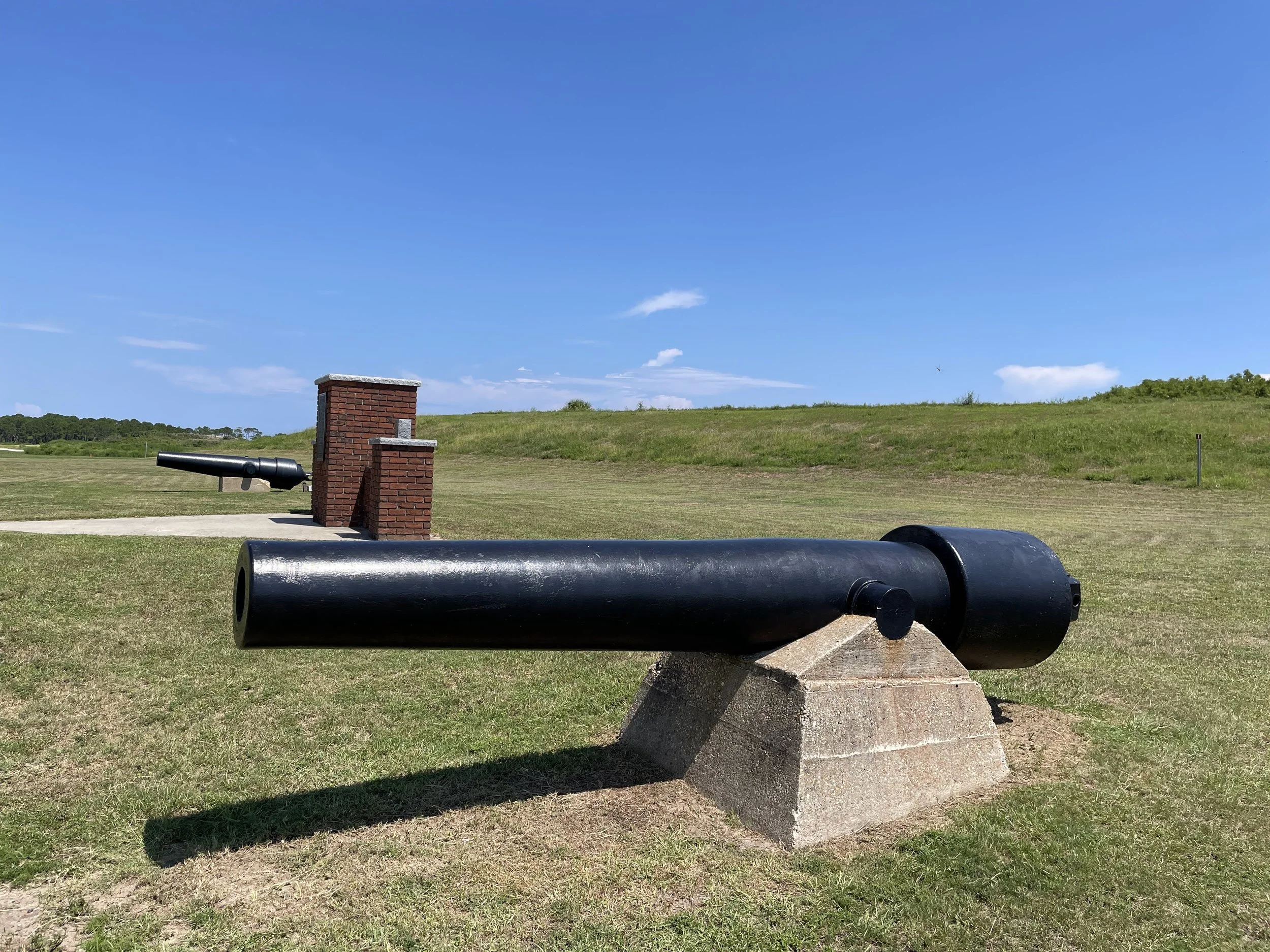
US Army 100-Pounder Parrott Rifle of Fort Morgan
A US Army 100-Pounder (6.4-Inch) Parrott Rifle, Number 90, is displayed near the entrance to Fort Morgan in Alabama. It was cast by West Point Foundry in 1863. As manufactured it weighed 9,827 pounds. It represents the cannons brought to the fort by the US Army in the 1870s.
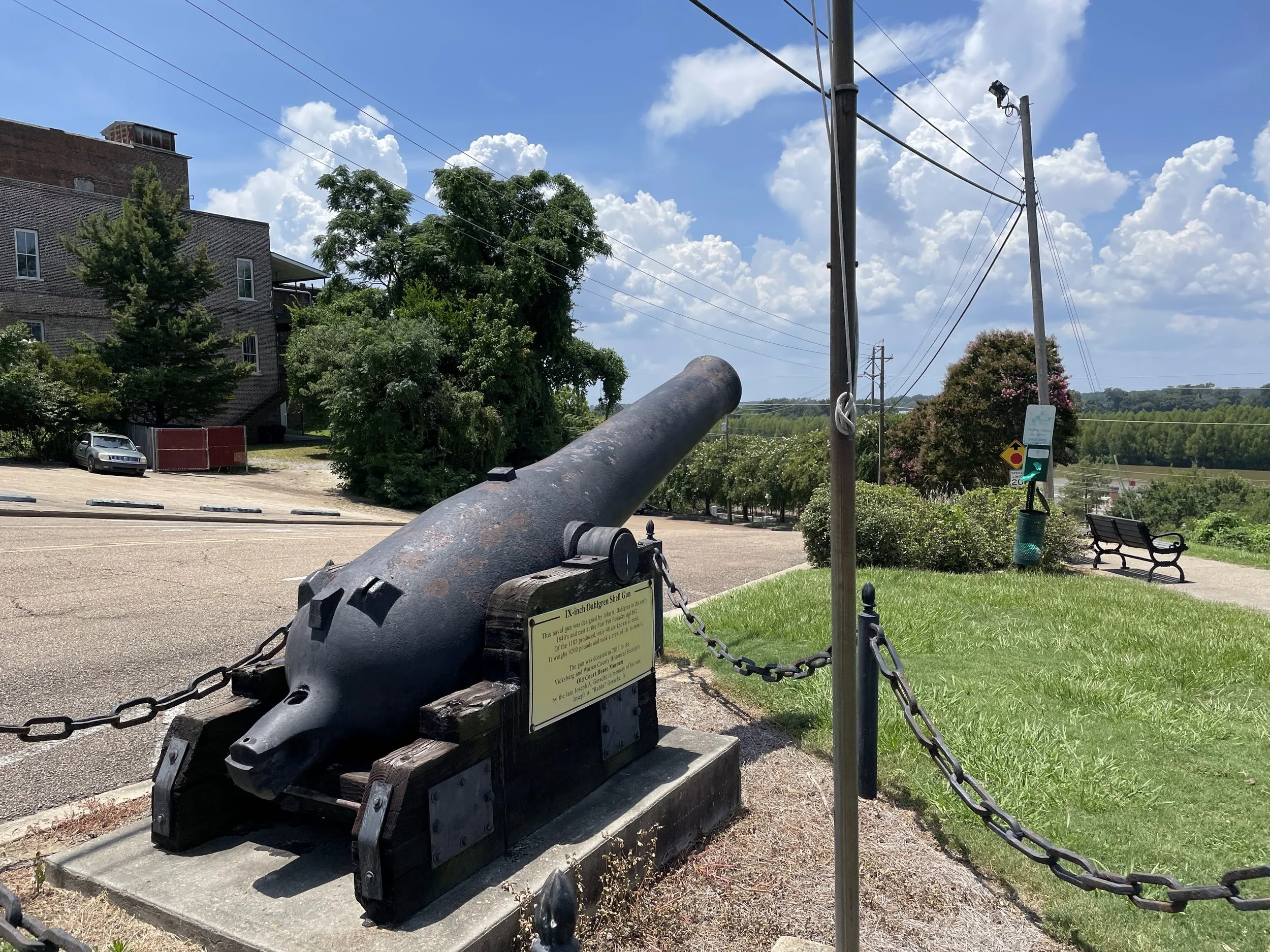
US Navy 9-Inch Dahlgren in Downtown Vicksburg
A US Navy 9-Inch Dahlgren is displayed in downtown Vicksburg, Mississippi. I was not able to read the registry number or the weight on the breech of the cannon. I have been told by a friend of the Facebook page that it is one of the two in Vicksburg which was originally carried aboard USS Tuscumbia and later used by the US Army’s 17th Corps.